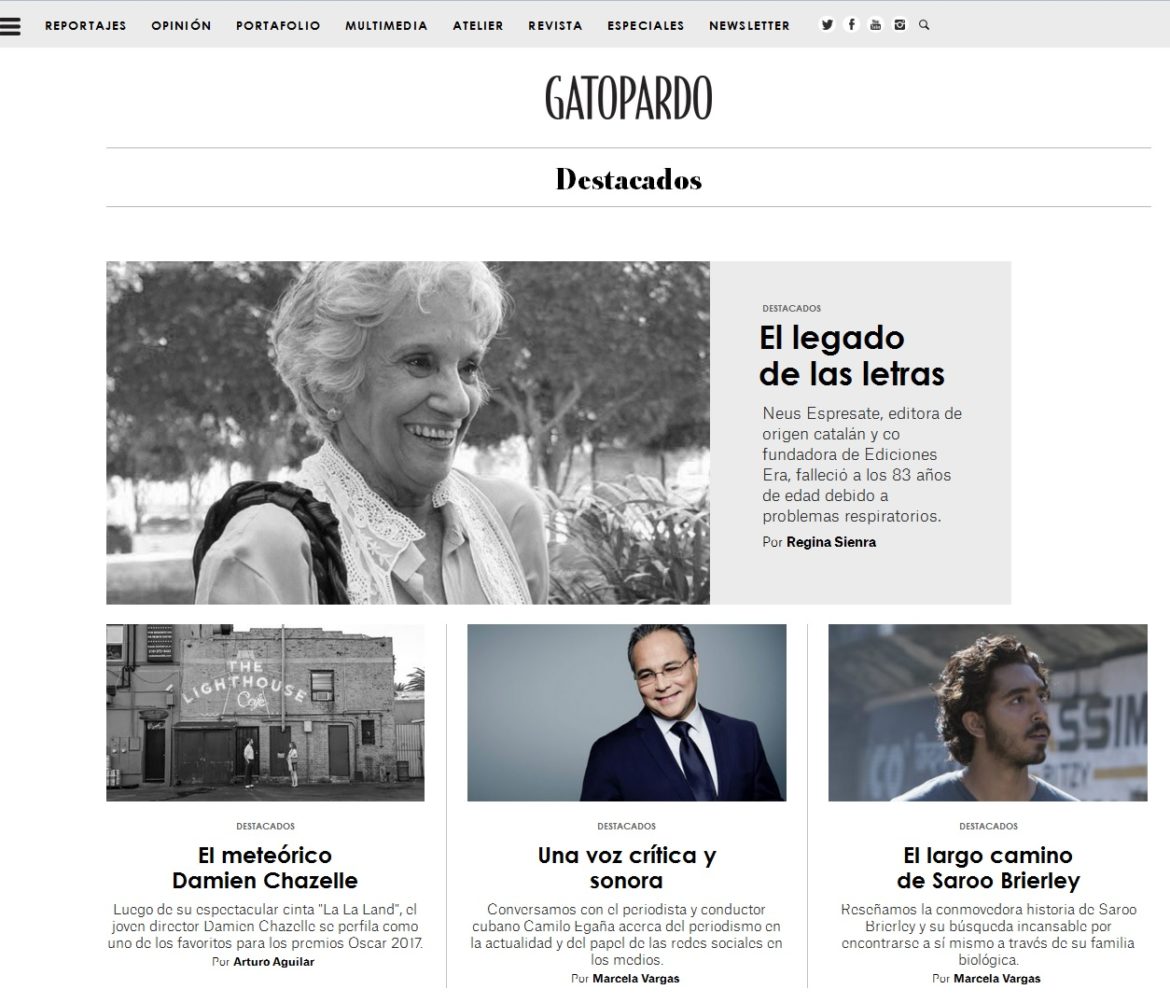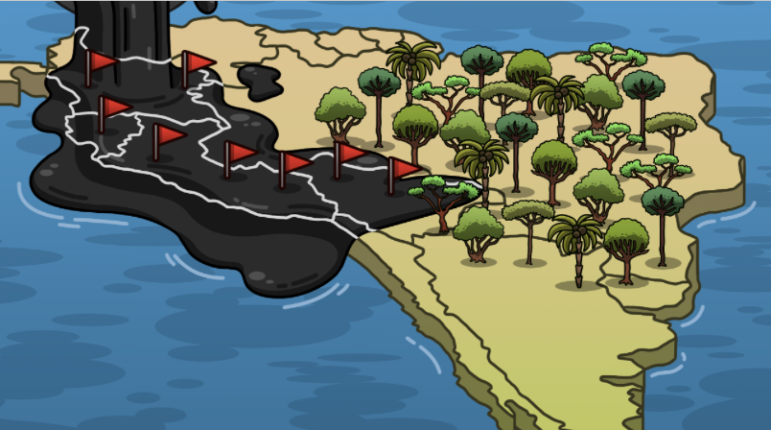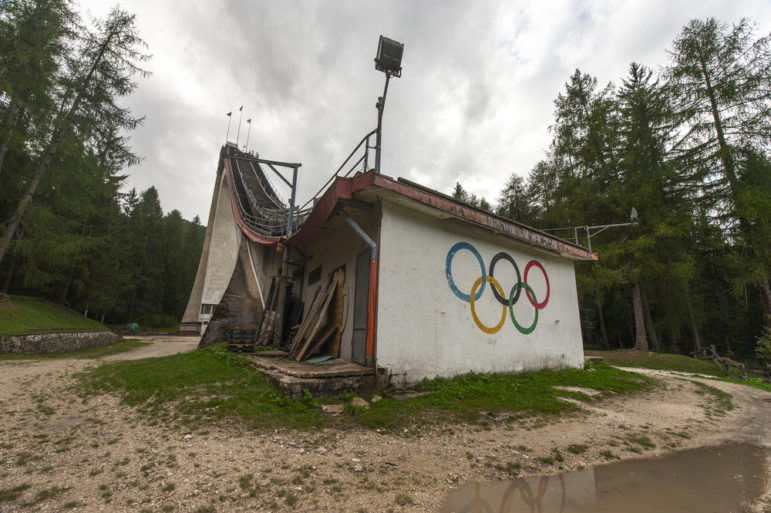

Latin America’s Wave of In-Depth Digital Media Projects
NBA Commissioner Adam Silver said in early 2017 that he was considering reducing the time of basketball games given the increasingly short attention span of the public, especially the so-called “millenial.”
 And it seems that something similar is happening in these times of short tweets. A study by traffic analysis firm Chartbeat showed that the vast majority of readers did not get beyond half an article online. In fact, 10 percent of users do not pass the first scroll.
And it seems that something similar is happening in these times of short tweets. A study by traffic analysis firm Chartbeat showed that the vast majority of readers did not get beyond half an article online. In fact, 10 percent of users do not pass the first scroll.
This could indicate that long-form journalism, whose content is of greater length and depth, is not a style likely to succeed on the internet.
However, both online and print publications have taken the risk of producing long-form journalism for the internet, with different levels of success. At least in Latin America, the genre is present and struggling to impose itself in the midst of overproduction of content more easily consumed on the internet.
Sometimes that means re-inventing the traditional presentation of long-form as 4,000-word stories full of text. News media are increasingly combining multimedia elements such as text, video, audio, and infographics to create a new way of telling long and in-depth stories.
Brazil’s Publica: New Formats
Brazilian nonprofit Agência Pública is a good example of how to apply innovation to bring long-form to life on the internet. In February of this year, it presented the report “Vigilância” (Surveillance), which tells how the video surveillance system installed to reinforce security during the Olympic Games was being used by the authorities to suppress demonstrations.
 With the work of five reporters, Agência Pública created a multimedia platform with several sections, in which the user can actively participate with journalistic content.
With the work of five reporters, Agência Pública created a multimedia platform with several sections, in which the user can actively participate with journalistic content.
“We think a lot about how to make stories more interactive, more appealing to the public,” said Natalia Viana, who led the team that created Vigilância with Colombian journalist Olga Lucía Lozano. “We together thought how it can be published in a way that is exciting, that is not the same long-form text that Agência Públics has been famous for.”
“We wanted this product to be innovative and to look different,” she explained to the Knight Center. “The way people interact with the content is different, just like the way they navigate. The user can choose the order in which they want to see the content.”
The information is presented as a grid of video surveillance monitors in which each screen leads to a different section. The content comes in the form of text, video, interactive graphics, illustrated interviews, infographics, and a map in which people contribute by sending data on the location of security cameras.
“It could have been written as a book,” Viana said. “As well, we could have written an article, but that could have been very boring.”
“We are basically deconstructing [the content], separating it in different narratives, different experiences, so if a person wants to have the full panorama, they can see it, or they can just pick whatever they want. We are doing this in a way that allows the reader to choose what they want to do in in which order they want to do it.”
 “Vigilância” is the result of an Agência Pública project called LABs, which consists of experimentation laboratives for testing new ways of presenting journalistic content. The first product of these laboratories was “100,” in 2016, for which the site compiled stories of 100 residents of Rio de Janeiro whose houses were demolished as part of the construction for the Olympic Games.
“Vigilância” is the result of an Agência Pública project called LABs, which consists of experimentation laboratives for testing new ways of presenting journalistic content. The first product of these laboratories was “100,” in 2016, for which the site compiled stories of 100 residents of Rio de Janeiro whose houses were demolished as part of the construction for the Olympic Games.
For “100,” the innovation was to present the stories in an animated graphic that simulated a neighborhood, where clicking on each house showed the story of each victim of the eviction, accompanied by maps, videos, or audio and photographs. The product, which was published in Portuguese and English, surpassed 50,000 visits and was taken up by international media like the Daily Mirror.
“There will always be a lot of interest in long-form,” Viana said. “I just think is important to try different formats. … our role at Agência Pública is to have innovative projects, because we want to transcend independent journalism.”
Print media specializing in long-form are not alien to the innovation implied by the transition to internet. Magazines with a long tradition in this journalistic genre are experimenting to adapt their long-form content to the language of the internet.
Mexico’s Gatopardo: Telling Good Stories
Such is the case of Mexican magazine Gatopardo, which at the end of 2015 premiered a new website in which, for the first time, it presented content made exclusively for the web. The magazine faced the challenge of producing long reports with the same quality and journalistic rigor as its printed version.
“We started producing smaller, but more narrative stories. I felt that the website had to be more anchored with the day-to-day. While the [printed] magazine discusses the news, [the articles] are a bit timeless, you can read them in a year and they remain relevant. I wanted the site to be more anchored in the news and now,” said Felipe Restrepo, editorial director of Gatopardo, who was in charge of redesigning the magazine’s website.
“The idea of making them shorter had to do with time,” he said. “A long-form article for the printed magazine takes between three and four months to do. And as we seek greater immediacy for the web, we have to make them a little shorter. The idea is that, although they don’t have 50,000 characters, but rather 10,000 or 15,000, that they maintain the same rhythm that a more extensive long-form article would have. It’s a matter of language.”
Although for the moment the investment – provided for mainly through advertising in the print version – has only permitted the addition of video and photography to the long-form stories on the web, the next goal for Gatopardo is to present multiplatform content on its page.
“We are a very small media outlet that does not have a large web team to follow this path, but we start doing it little by little,” Restrepo said. “The plan is to have video, data that is displayed between the text. But that requires a lot of investment and a very big team.”
Even without the multimedia elements, Restrepo has faith that a well-told story remains the main ingredient for long-form to succeed, regardless of the platform on which it is read.
“While it is difficult to read on the phone or on the computer screen, if it is a well-told story, it will catch you and keep you there. The challenge is to tell good stories. In the end, what matters is the quality of the narrative language and how it is written,” Restrepo said.
Cuba’s Innovative Estornudo
 The site El Estornudo, from Cuba, is an example of how well-told long-form stories can lead to journalistic innovation: through their articles, they have found a way to tell the realities of the island without resorting to “anti revolutionary” journalism or journalism of denunciations which the Cuban government prohibits.
The site El Estornudo, from Cuba, is an example of how well-told long-form stories can lead to journalistic innovation: through their articles, they have found a way to tell the realities of the island without resorting to “anti revolutionary” journalism or journalism of denunciations which the Cuban government prohibits.
“To say that there is poverty or repression you do not have to say that Castro is a villain, but that you go, tell it, and show it through a story,” said Carlos Manuel Álvarez, editor of El Estornudo, which has five writers and 20 external collaborators. “We are making a journalism that doesn’t exist in Cuba: to bet on an important aesthetic approach, a use of much more conscious language, to tell a story.”
Thus, the long-form journalism of El Estornudo has succeeded in having social repercussions. Its piece “Muñeca Rota” (Broken Doll), a story about the suicide of an emigrant in Ecuador and the efforts of her mother in Cuba to repatriate her body, generated such a stir thanks to emotional language, that the Cuban Foreign Ministry sought out the women to offer help, according to Restrepo.
The mere fact of opening and sustaining a long-form content site is a major innovation in journalism in Cuba, where internet access is still limited. The online magazine is financed by its own contributors and earns extra revenue from selling some pieces to media like Univision or Al Jazeera.
“El Estornudo began with the enthusiasm of a group of people, and more people have been added for a lack of publications,” Álvarez said. “There are many people who feel like doing this and have no place. That is one of the things that has allowed El Estornudo to live to this point, because there is a professional vacuum in that sense, in Cuba,”
Due to its success, the site, which was founded in March 2016, will receive funding from Open Society for this year and the next, which will allow it to add to its own long-form internet tools, like video, data visualization and a strong strategy on social networks.
The teams of El Estornudo, Gatopardo, and Agência Pública agree that, in the end, a well-told story will continue to engage readers, regardless of whether it is read in a printed magazine or on a cell phone.
“My intuition is that good stories are not going to die,” Estrepo concluded. “It may sound a little cliché, but we should keep attracting readers whether or not it’s published on multiple platforms. The meaning, the heart of everything, is a story that explains to people the world in which they live. That beyond the technique you use, has to do with the instinct of a good journalist.”
This story, originally posted on Journalism in the Americas’ blog, is part of a special project by the Knight Center that is made possible through the support of Open Society Foundations. The “Innovative Journalism” series covers digital news media trends and best practices in Latin America and the Caribbean. It is reproduced here with permission.
 César López Linares is a Masters student of Journalism at the University of Texas at Austin and has a Bachelors degree in Communication from the National Autonomous University of Mexico. He has worked as an entertainment and media journalist for Reforma, Todo Austin, Texas Music Magazine and The Knight Center for Journalism in the Americas.
César López Linares is a Masters student of Journalism at the University of Texas at Austin and has a Bachelors degree in Communication from the National Autonomous University of Mexico. He has worked as an entertainment and media journalist for Reforma, Todo Austin, Texas Music Magazine and The Knight Center for Journalism in the Americas.










